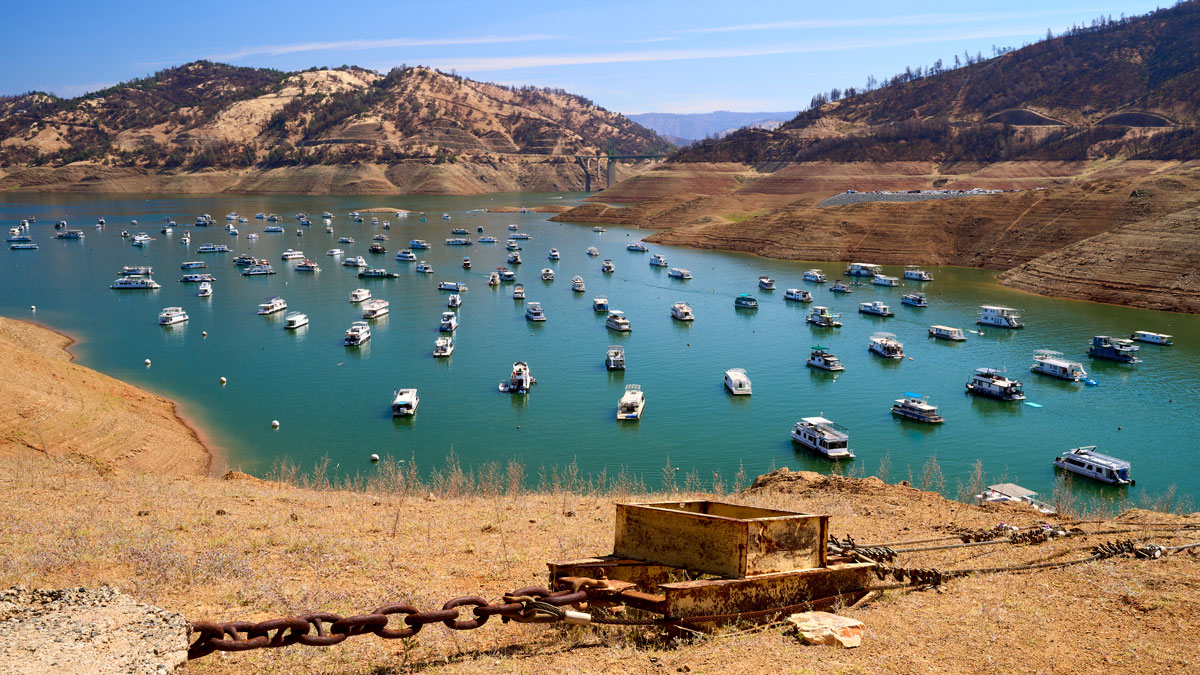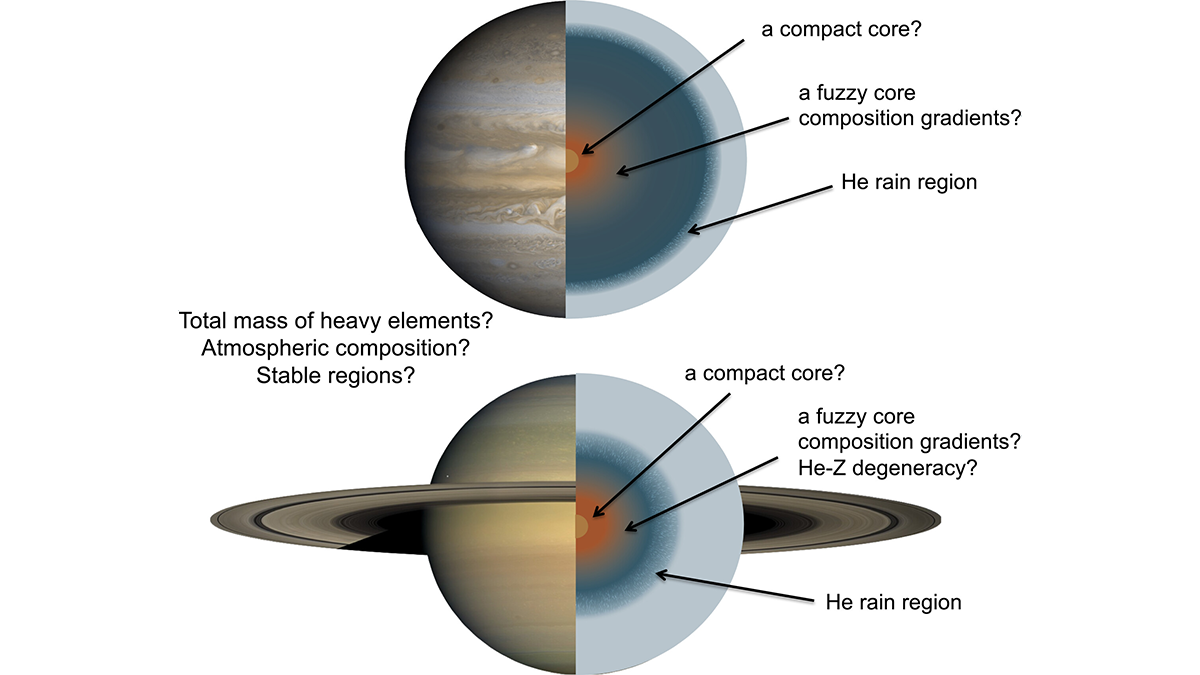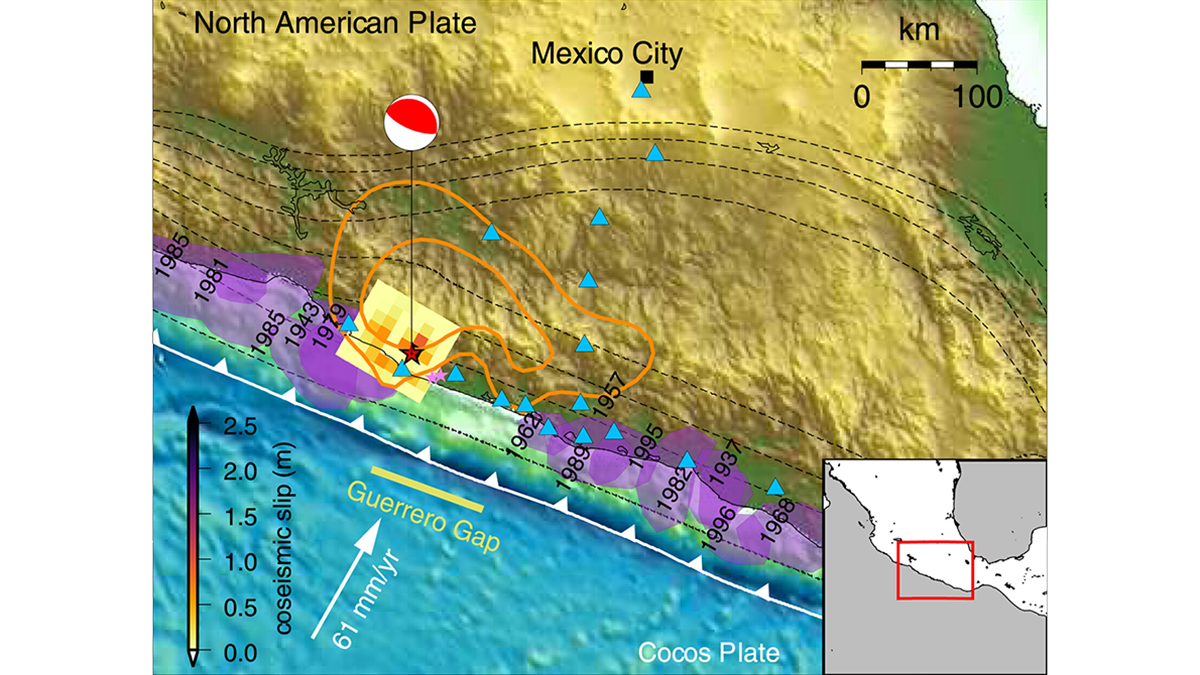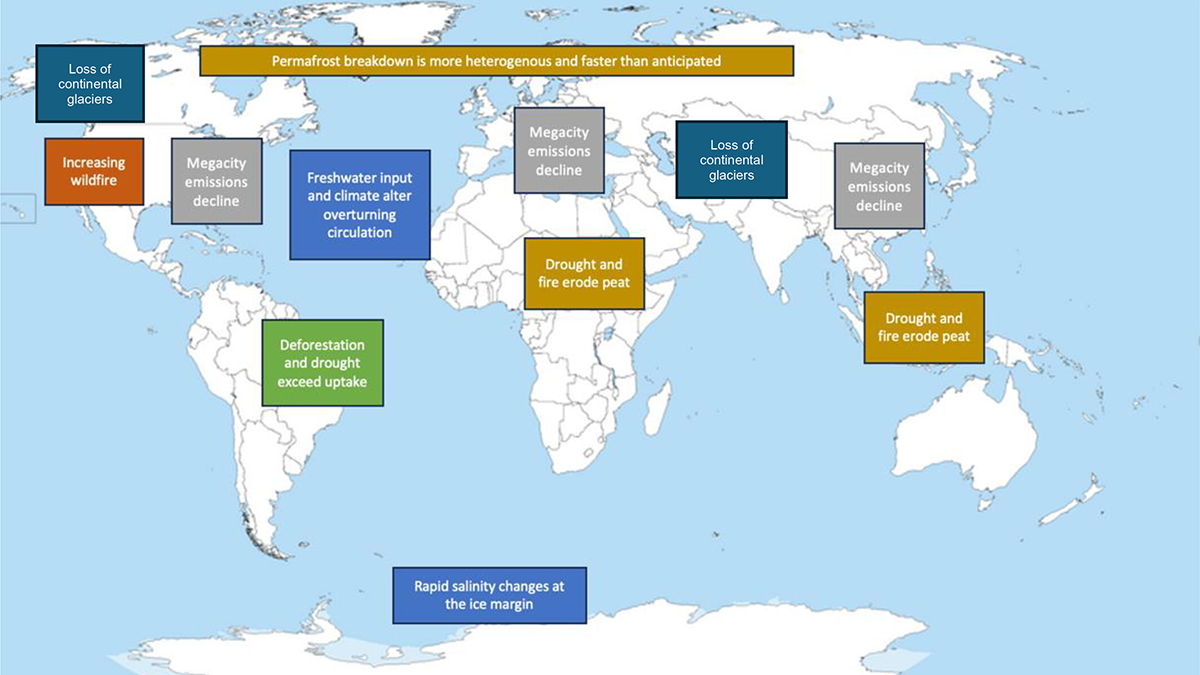A new study introduces a timescale for optimizing tradeoffs between carbon gain and water loss to improve estimates of photosynthesis during prolonged dry spells.
AGU Advances
When Extreme Drought Becomes Commonplace
As drought becomes a more regular occurrence, a new study looks at the U.S. Drought Monitor, the nation’s preeminent drought classifier, to see how it has reflected climate change since 2000.
Fault Maturity or Orientation: Which Matters More for Quakes?
Close examination of a 2021 earthquake on the Tibetan Plateau provides hints that, counter to prior assumptions, the influence of fault orientation can sometimes trump that of maturity.
Gas Giants with Fuzzy Cores
New measurements of Jupiter and Saturn show that both planets have dense cores that are gradational (fuzzy) and large, rather than small and compact.
Forecasting Earthquake Ruptures from Slow Slip Evolution
A new generation of physics-based models that integrate temporal slip evolution over decades to seconds opens new possibilities for understanding how large subduction zone earthquakes occur.
Framing the Next Decadal Survey for a Warming World
The next decadal survey (DS28) will be framed by a rapidly changing world, and will be critical to consider observational needs of the 2030s-2040s, a world increasingly dominated by climate extremes.
Where and How Sea-Level Rise Threatens Coastal Areas and Communities
To better understand how sea-level rise threatens coastal areas, scientists propose a new indicator to estimate the risk of coastal flooding under climate change.
Coming to a Consensus on Carbon
A new study describes inconsistencies in how different Earth system models predict soil carbon levels in a warming climate.
Speed of Ice Shelf Rifting Controlled by Ocean-Ice Interactions
Scientists report the fastest rate of rift extension yet observed for an Antarctic floating ice shelf and explain why it is far slower than rates expected for brittle ice deformation.










